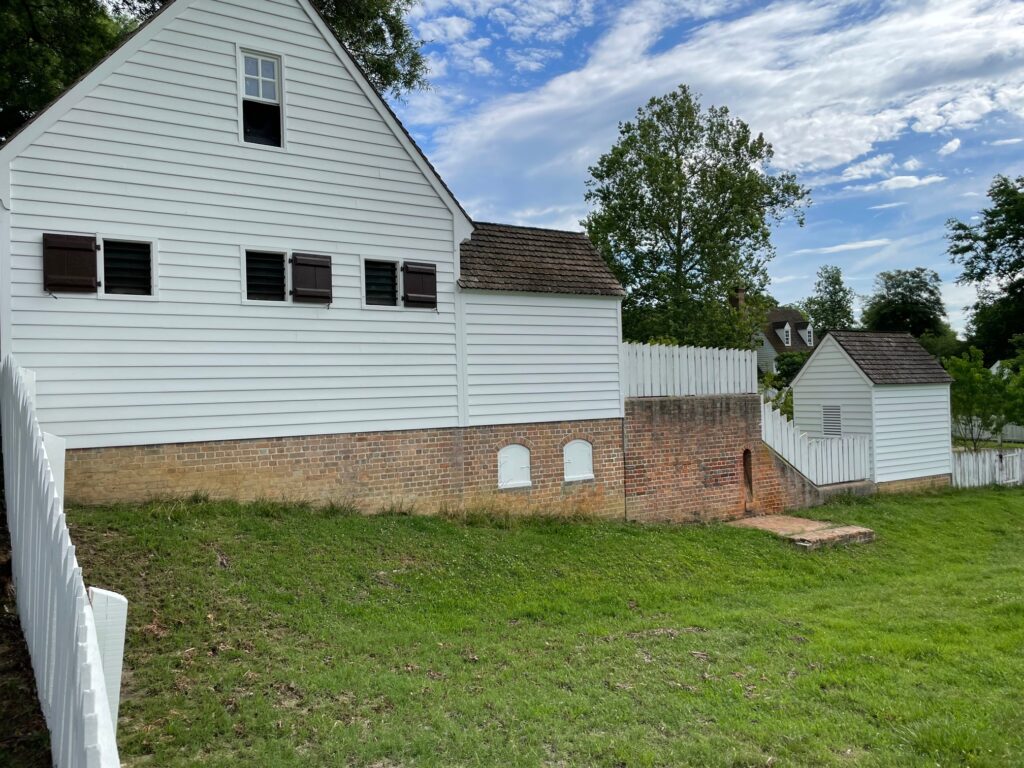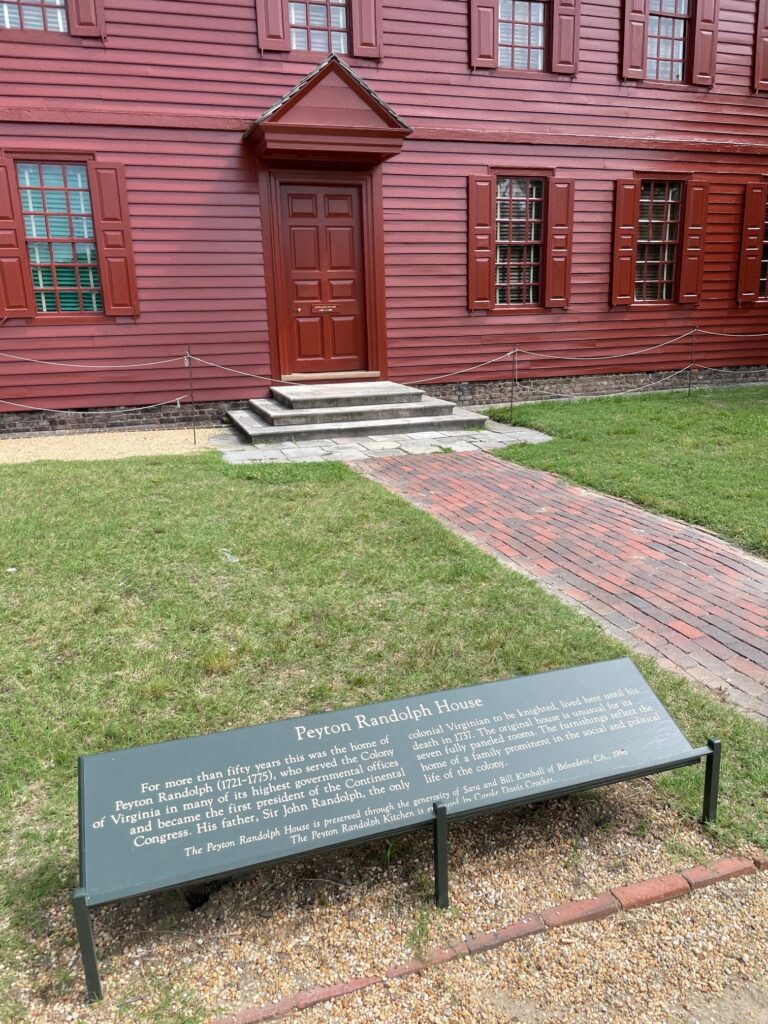There’s an irony in writing a true account about the living history museum at Colonial Williamsburg. Its eponymous foundation and its curators have grappled with the same two questions for generations: Whose histories do we tell and how shall we recreate them? Today, Williamsburg faces a new set of questions beyond the facts recorded in the governours’ ledgers: Whose truths do we tell and how shall we present them in concert together, especially in light of the 1619 Project, the Black Lives Matter movement, and Critical Race Theory, whose progenitors demand more than new lines of inquiry. They demanded action. Williamsburg has made clear efforts to juggle archaeology with interpretation, and it has also attempted to address the indictment of sophistry among its critics, which are legion. But, can the sites of Williamsburg’s 301 acres respond to our moment now?
In our post-vaccination world, Colonial Williamsburg is worth revisiting this summer, as I did in June—not for what its evidence reveals about Colonial America, but for our opportunity to change the course of what I’ll call the Williamsburg Experiment, ongoing for more than 380 years.

In the spirit of the travelogue, let’s begin with the obvious observation: Historic Williamsburg’s presentation of Colonial life since it opened nearly a century ago has been the subject of debate and the object of derision. Here are the greatest hits from the last 30 years: it’s a “Republican Disneyland” reconstructed for the “consumption of kitsch” where the intermingling of “reproductions and renovations and innovations” makes the place seem unreal, and where costumed interpreters, who are “extensively trained yet underpaid…embody ambivalence” in their jobs and who are regularly “caught between educating and appeasing.”
On the other hand, it has been described as ground zero for relevant debate about the thorny issue of the authorship of history and the conservatorship of spurious narratives. Even the aforementioned Republicans agree on the site’s capacity to facilitate debate. In a 2013 op-ed, the American Conservative’s editor Arthur Bloom said, “[It] feels like a covert battleground in America’s culture wars. It’s where an overwhelmingly white and conservative audience meets the post-Howard Zinn cutting edge of history.”
In the year since George Floyd’s death, museums and living-history experiences like Williamsburg have redoubled their efforts to sensitively and accurately represent objects and topics centered on the African-American experience. As docents gave way to interpreters two decades ago, and as monolithic “history” gave way to reflecting plural histories two generations ago, the active interrogation of bones, baubles, and balustrades has become both a curatorial ethic and a research methodology. Never has who, what, where, when, how, and why been so uncertain and yet so urgently sought.
My first visit there was nearly 20 years ago, my last was a few weeks ago, and there have been several in between. In that time, the economics of slavery have always formed the nucleus of why. Questions of when (1619 onward), where (the Virginia Peninsula), how (Triangle Trade ships) have been represented. But, “who” and “what” offer the battleground that Bloom and others see as the crux of the place. Since Williamsburg’s great reckoning in the mid- to late-1970s, in response to the practice of (and belief in) historical pluralism that accepts competing and sometimes irreconcilable narratives, its curators have begun chipping away at the monolith. Tried and true narratives about how Middle Plantation became a colony’s capital were finally mapped to the stories of enslaved Americans. The results, it seems, are still being tabulated.
Williamsburg’s founder, Reverend W.A.R. Goodwin, and its benefactors, Abby Aldrich and John D. Rockefeller, Jr., were messianic in their intentions and buoyed by the Colonial Dames, the Association for the Preservation of Virginia Antiquities (Preservation Virginia), and the Daughters of the Confederacy. This was to be a place where the real story of American republicanism and the House of Burgesses could be told. This was a place where the symbols of American nationalism in the 1920s and 1930s could be drawn and signified. This was a place that could crest the wave of Colonial Revival enthusiasm that was part and parcel of America’s 1926 sesquicentennial. It was a place you could take the kids in the years between world’s fairs and as an affordable alternative to Disneyland; where they could learn “a thing or two” and write a report for class. Above all else, Williamsburg was a place where a certain ideal of Colonial Virginia and the birth of America could be packaged, bought, taken home, shared, and reshared as postcards, placemats, placards, and fake parchment. It was, for the first 50 years of its life, something between an oasis and a mirage — the promise of salvation for the plutocracy when things get too weird, too hot, or too hard in their version of America.
What I’ll call Colonial Revival Williamsburg, circa 1931, used to be a memento mori for ye goode olde days. These days, though, it has become a reminder of the death of one-sided historical narratives, and its administrators and curators should be given credit for hunting, revealing, accepting, and interpreting historical narratives — however incommensurate they are—to participate in the questions of our time. Williamsburg isn’t alone, either. Agecroft, Bacon’s Castle, Menokin, Monticello, Mount Vernon, Woodlawn, and dozens of house museums around the Commonwealth have all confronted the available physical evidence of their sites, the received histories of generations, and the realization that truths are as malleable as churned butter. Williamsburg has also remained popular in spite of the area’s newcomers like Busch Gardens in 1975 and the Jamestown Settlement Museum designed by Glavé & Holmes in 2007. Its burden of proof for popular history, however, has become harder to achieve.

In his 2017 book The Color of Law, Richard Rothstein writes about our collective indulgence in “comfortable delusions.” His broader topic is government sanctioned segregation in the 20th century, and the delusion is along the lines of, “ surely states could never be capable of perpetuating and sustaining segregation, and only private interests can really do that.” I’m paraphrasing here, but the point is that societal indulgences are expensive, and their costs are borne by society’s disenfranchised members. Comfort for the ruling class, on the other hand, is cheaply acquired through the inheritance of generational wealth, privilege, and primacy. This system, Rothstein argues, can only exist in both tacit and explicit agreement between private interests and governments at all scales.
In Williamsburg, you see vestiges of a ruling class, a mercantile class, as well as butchers, bakers, and candlestick makers. You can hear about any one of the capital’s gentry—Wythe, Randolph, Carter, Tucker. You can also hear from Jupiter, Jemmy, Johnny, and Mingo—enslaved men all portrayed by the actor and interpreter Jamar Jones. You can see where native tribal ambassadors camped, out of sight of the capitol building. You can contemplate colonial crime and punishment in the public gaol, within plain view of the capitol building. You can tour the “African American Religion Exhibit” near what would have been the outskirts of town in a converted stable, which commemorates the first non-surreptitious congregations.
Looking at the backdrop of buildings and landscapes, there are still elements of bogus reconstructions conjured by the original architect Williams Graves Perry and advisors like Fiske Kimball. From an architectural point of view, it’s artifice and stagecraft, but it’s not unpleasant or unenjoyable. But, from a cultural point of view, what have become evident at Williamsburg — at first by degrees since the 1970s and now more fully — are the systems economic and corporeal slavery. For many visitors, the questions they’re finding answers to are still going to be, “What’s a joinery,” or “What’s peanut soup like?” But, from a historical point of view, singular questions about probity have given way to a plurality of answers that aren’t perfectly articulated, but are available to be interpreted, however tamely at times.
At the carpenter’s yard on the north side of Nicholson Street, a carpenter explained his trade as an 18th century character and then slipped into the 21st century to explain how new things are made to look old — authenticity and artifice both at odds and in harmony. He explained that the archeologists digging and dusting in the field behind him on the future site of a brickyard were there to make sure nothing important would be disturbed. Before I could ask what important in this context meant and how it was evaluated, he told the group, “We have over 400 years of documented history here and 1,000 years of undocumented history. We don’t want to screw any of that up.”

Invoking Susan Sontag here might seem too obvious, but her essay “Notes on ‘Camp’” from more than half a century ago offers a few signposts to understand — or at least excuse — some of the friction that preoccupies historians and critics. “Camp is the consistently aesthetic experience of the world,” she writes, “It incarnates a victory of ‘style’ over ‘content,’ ‘aesthetics’ over ‘morality,’ of irony over tragedy.” Sontag’s extended notes weave through thorny topics like our cultural need to make our truths moral and make our lies immoral. To advertise a piece of writing as “notes on” (as Sontag did and as Thomas Jefferson once did in his “Notes on the State of Virginia“) is to warn readers that the narrative thread might be a little bent and broken, and it’s up to them to organize the notes for themselves. In some ways, that’s the entire point of Colonial Williamsburg. There are plenty of notes available there. Irony and tragedy are abundant, and you can decide for yourself how much style you’re willing to accept in lieu of the content that you’ll have to work a little harder to reconcile.
In revealing the diabolical truths of slavery, Williamsburg is on a path of achieving something close to the authenticity it should never really promise, but that its visitors crave. None of its visitors, of course, have a reasonable expectation of being transported to the 18th century. But, from what I could see, most of Williamsburg visitors were visibly and predictably impressed with how different things seem to their everyday lives. Wonderment was evident. People really listened to the interpreters at the sites we visited. Children asked questions and few, if any adults, were glued to their devices at any time in my four days there, obviously subsumed by the place.
The branch of philosophy called metaphysics asks us to consider what something seems like, in the tension between what we perceive and what is real. By that standard, the Williamsburg Experiment is wildly successful. But, the branch called ethics asks us to evaluate a situation by, quite literally, assigning a value of right or wrong. By that standard, the Williamsburg Experiment raises one additional question for its future visitors: Does authenticity guarantee a story’s truth, or is truth conferred by the storyteller? The answer, at least for Williamsburg and probably for Sontag, if she were around today, can only be answered in notes and never in narrative.
About the author
William Richards is a writer and editorial consultant based in Washington, D.C. From 2007 to 2011, he was the Editor-in-Chief of Inform Magazine.
